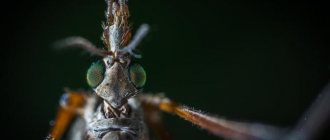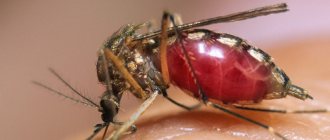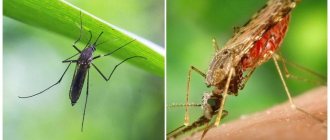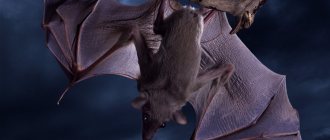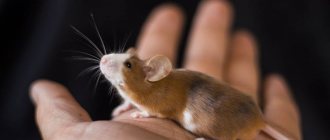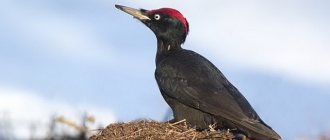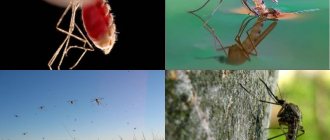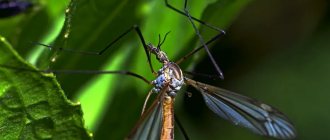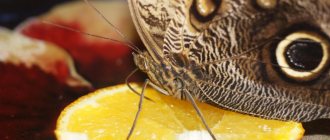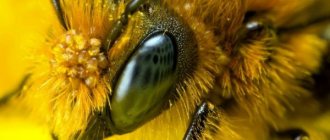In addition to repellents and insecticides, mosquito control mainly comes down to preventative methods using natural remedies to control the spread of these insects. Numerous methods rely on the use of animals that are natural predators of mosquitoes. As you know, the ecosystem is absolutely balanced, and if mosquitoes feed on our blood, it means that other animals feed on these insects. But who eats mosquito larvae and the mosquitoes themselves? Today we will try to answer this question.
Larval stage
The most famous animal that eats mosquitoes is definitely bats.
However, there are many other predators in nature that few people know about. These include, but are not limited to, other insects, amphibians and even fish.
First of all, we should not think of mosquitoes only in their adult form (flying insects). The fight against this “bloodsucker” is carried out even when the insect is in the larval stage of development.
Who eats adult mosquitoes
Many animals feed on mosquitoes throughout the warm season. From spring to autumn they are actively eaten:
- Birds. Swallows and swifts catch mosquitoes and midges in the air, and tits, orioles, and wrens catch mosquitoes in the bushes and treetops. In the grass and on the ground there are warblers, starlings, waders, birds, and finches.
- Amphibians – frogs, toads, newts. They watch for insects flying to the water and catch them with their sticky tongue.
- Reptiles - lizards, geckos, chameleons that catch insects in the grass or trees.
- Aquatic turtles – marsh turtles, trionics, red-eared turtles.
- Small fish of rivers and lakes - roach, whitefish, vendace, grayling, trout and other species that feed at the surface of the water. Some fish jump out after low-flying insects, others accurately shoot them down with a stream of water (for example, the spray fish).
- Arthropods - dragonflies, wasps, spiders, flycatchers and predatory beetles. With luck, a mosquito that lands on the ground or a blade of grass can be eaten by an ant or ground beetle.
- Chiroptera - bats. They deftly hunt insects in the evening and at night.
- Small mammals are hedgehogs and mice that catch mosquitoes in the grass.
- Predatory plants – flycatcher, sundew, butterwort, bladderwort, dewwort and others. Some plants stick flies and mosquitoes to themselves using a sticky secretion, while others actively catch them with special organs.
When temperatures drop (from autumn to spring), birds and small mammals find and eat those mosquitoes that have hibernated and hid in secluded crevices.
Insectivorous birds
Birds eat insects. This is no longer a secret. The main birds that massively destroy mosquitoes are swallows. However, the problem is that mosquitoes are only part of the swallow's diet. These birds do not focus their attention on mosquitoes, simply eating all the insects in a row.
An interesting fact is worth noting. It lies in the fact that in our country mosquitoes over the past 50 years have become much larger than before, while the birds of prey that exterminate them have become considerably smaller.
Who eats adult insects
Of interest are not only those representatives of the fauna that eat mosquito larvae, but also species that feed on adult individuals. After all, adult mosquitoes cause a lot of trouble for people, as they interfere with normal rest, bite and provoke allergic reactions.
Every year people look forward to seeing dragonflies appear in the swamp. After all, they eat mosquitoes. Dragonflies move only in numerous flocks, looking for places where mosquitoes and their offspring gather. They catch them on the fly or during the rest period. Since mass concentrations of dragonflies are observed in early summer, people are interested in what other animals feed on mosquitoes. Mosquitoes are consumed by:
- Birds that prefer insects. These species include orioles, swifts, and swallows. They catch pests on the fly or look for them in the bushes. Undoubtedly, other bird species eat mosquitoes, although in small quantities.
- Reptiles. Children and adults know that a frog eats a mosquito. They use long tongues to catch. This fishing method is used by iguanas, lizards and chameleons. Adults contain nutrients that are necessary for the normal development of reptiles.
- Rodents. Field mice and hedgehogs live in the grass and bushes. They consume small numbers of mosquitoes, but still contribute to population declines.
- Crustaceans and spiders. To catch pests, spiders use cobwebs, weaving them in places where insects may accumulate.
- Fish. There are phenotypes in nature that feed on adult pests. These include vendace and roach. They catch insects that move near water. Active catching of fish is carried out at the moment when mosquitoes dump their offspring into the water.
Mosquito populations are partially reduced by plants that emit aromas and juices that are attractive to insects. Adult pests that fly up to such plants stick and die.
A considerable number of individuals die due to the fact that people use insecticidal preparations, chemicals, folk methods and devices. Some drugs affect adult insects and their offspring.
The number of enemies of adult mosquitoes, bloodworms and eggs is enormous. Caution against blood-sucking insects should be exercised not only at night, but also during the daytime. Therefore, mosquitoes form a huge number of clutches so that their population does not decrease.
Reptiles and amphibians
Some reptiles include mosquitoes on their menu. For example, the gecko eats mosquitoes from morning to night. The lizard includes them in its diet, like other small insects, and together with some amphibians (for example, newts) they normalize mosquito populations in their natural habitat.
Frogs and tadpoles also fight mosquitoes. The former only occasionally feed on adults, while the latter eat the larvae themselves. But even if they do not eat the larvae, they consume the same aquatic nutrients as the larvae, thereby creating competition for them in terms of development.
Who eats adult mosquitoes?
Numerous mosquito populations are able to survive only due to high fecundity. The prevalence of mosquitoes is very wide, so they are food for some representatives of flora and fauna.
In different regions, some bird species are completely dependent on the abundance of mosquitoes and their larvae. There will be no more insects, fewer birds, and so on. That is, in nature there is a tiering system, where mosquitoes occupy the lower layers in the food chain.
Dragonflies
Every summer we can't wait for the dragonflies to come out. It is with their appearance that there are fewer bloodsuckers. Dragonflies fly in flocks, hatch from bodies of water and begin their migration to places where there is a lot of grass, trees, and therefore food. Big-eyed insects fly in flocks and eat mosquitoes in flight. The abundance of dragonflies occurs at the end of June, beginning of July.
In addition to dragonflies, mosquitoes are tasty food for:
- Insectivorous birds. Swifts and swallows eat insects in flight over a pond. Orioles and tits feed on mosquitoes in the bushes;
- Reptiles and amphibians. Toads, frogs, iguanas, spreading their long tongues, swallow a flying mosquito with lightning speed. Chameleons live in the trees, geckos and lizards live in the grass, and they can also feast on adult adults;
- Rodents and other small representatives of mammals - these are hedgehogs and mice that live in the grass and are not averse to eating a few mosquitoes;
- Centipedes, spiders, crustaceans, dragonflies, wasps;
- Fish, some of their species, that are capable of catching insects from the surface of the water. Among them are trout, vendace, whitefish, roach;
- Plants that have sticky secretions that attract insects.
Each mosquito goes through several stages in its development:
- oviposition;
- hatching of larvae;
- appearance of the pupa;
- adult insect (imago).
Life cycle of a mosquito
At each stage, it is eaten by representatives of flora and fauna. An adult mosquito is very easy to catch and eat, since it has a very small body, it cannot harm a larger insect, and therefore becomes a victim in the paws of, for example, a spider or a frog.
Many birds live near bodies of water, and, as you know, there are a lot of mosquitoes there, so they feed on all mosquito breeding elements (larvae, eggs, pupae).
But if you think that this causes fewer mosquitoes, then this is a misconception, since having eaten one individual, several will appear in its place. This is how nature works so that insect populations renew themselves.
Who eats mosquito larvae, pupae and eggs?
Mosquito larvae and eggs are no less nutritious than adults. Therefore, they are eaten with great pleasure. But who?
Mosquito larva under a microscope
Female mosquitoes lay eggs in puddles and water. Sometimes, if there is no pond nearby, then in tall grass. If this happens in water, then the eggs sink to the bottom or float in a sticky state on the surface of a lake or river.
Then, with the onset of hot weather, larvae hatch from them. Mosquito larvae are called bloodworms and are presented in the form of red worms spinning in water. It can be found on the shelves of hunting stores as bait for fish.
These components of the mosquito's reproductive system can feed on:
- Arthropods living near a reservoir: mites, water striders, crustaceans, diving beetles;
- The larvae floating in the water are very actively eaten by wild species of guppies and gambusia. These fish are specially bred to eat eggs and bloodworms in the water. But unfortunately, this is abroad, not in Russia;
- Green red-cheeked turtles, which themselves live in water;
- Birds that fly in large flocks over a pond: seagulls, wild ducks and geese. They destroy a lot of eggs and larvae by passing water through their beaks.
Having bought bloodworms in a store (frozen in winter, live in summer), many aquarium fish lovers use it as food for their pets.
Gambusia
Gambusia is a small fish that loves to kill mosquito larvae.
In common parlance, this type of fish is also known as “mosquito-eating fish.”
Gambusia Affinis is a small (up to 5 cm), silvery fish. Gambusia eats mosquitoes (at the larval stage) with such an appetite as if it were living its last day. She herself is a native of America. But in history there is the fact that Gambusia saved Italy from the invasion of malaria mosquitoes. In the 1920s, many specimens of this fish were transported to Italy, and thus managed to overcome the malaria epidemic.
Male nutrition
Males do not have piercing teeth to pierce the skin, so they do not even physically have the opportunity to feed on the blood of animals and humans. The mosquito's diet is based on plant sugar, pollen, flower nectar and honeydew. Blood is exclusively the diet of females, which helps them actively reproduce.
Most often, males choose plant nectar, which is located in the sepals of the flower. Scientists define this method as parasitic feeding, since in the process of eating plants they can harm them. In this case, the diet does not change even after the individuals mate.
Males feed on plant nectar
The male mosquito does not drink blood
If an individual receives additional protein from the blood, this can significantly extend the life of the mosquito. However, only the female has such an instinct, which over such a long life cycle can mate several times and lay eggs, thereby increasing the number of offspring. The male has a more primitive metabolism, so he simply will not be able to process the protein entering the body, and the trunk will not be able to pierce the skin.
The male has a more primitive metabolism, and the trunk will not be able to pierce the skin
Due to this mechanism, a natural balance is maintained between individuals, and the expenditure of resources is distributed for the reproduction of offspring. At the same time, eating plant foods still contributes to a longer life of the insect compared to other species.
Tench
One of the largest eaters of mosquito larvae is tench. For this reason, this fish is widely used for biological mosquito control.
Tench is a fish of the Cyprinidae family, about 35 cm long, which can weigh up to 5 kg. It lives in freshwater basins and is widespread in Europe and Western Asia. As a habitat, it prefers muddy bottoms and stagnant waters rich in aquatic plants, on which it lays its eggs, between May and June.
The adult fish eats up to 1,500 mosquito larvae every day, becoming one of the most used natural predators in the fight against this pest.
polar fox
The polar fox is better known by another name - the arctic fox, which is famous for its snow-white fur coat. Arctic foxes are much smaller in size compared to their forest counterparts. The arctic fox's body length is 50-75 centimeters, and it has a gorgeous tail 25-30 centimeters long.
The arctic fox is a gorgeous decoration of the Arctic tundra.
There are white and blue arctic foxes, the latter have a darker coffee or gray body color with a bluish tint. Thanks to their beautiful fur, arctic foxes are valuable game animals. Blue foxes are the most prized.
Belukha
The beluga whale's body is covered with a thick layer of skin, the thickness of which reaches 15 centimeters. This thick skin protects beluga whales from injury when they swim among the sharp ice. And a layer of subcutaneous fat, the thickness of which is 10-12 centimeters, prevents them from getting too cold.
Seals and beluga whales do not freeze in the water due to their thick layer of fat.
Wintering for belugas is not easy; they constantly have to maintain ice holes so that they do not freeze, since these animals periodically need to rise and breathe fresh air. They break through the ice with their strong backs. But sometimes wintering ends tragically for them, when the polynyas are covered with too thick a layer of ice, and belugas are trapped in ice.
Lemming
These are another small rodent, a family of hamsters that live in the cold tundra. They are not afraid of frosts due to their smooth fur and thick layer of fat. They remain active throughout the year and spend the winter in nests made in the snow. During the day, this small animal eats twice its own weight. They feed all day with short breaks, and also store food for the winter.
The little fat lemming is not afraid of severe frosts, because it is protected by the warm interstitial and subcutaneous fat.
Muskox
Musk oxen live in Alaska, Canada, Greenland, Siberia, Norway and Sweden. They have incredibly long fur, so they are not afraid of life in the north, they can withstand even the most severe frosts. The fur hangs down to the ground, covering the legs. It consists of two types of hairs: the outer ones are long and coarse, and inside there is a soft and thick undercoat. The undercoat is called giviot, it is 8 times warmer than sheep wool.
Musk oxen have long and thick hair that hangs almost to the ground and protects them from the severe arctic cold.
White or polar owl
These birds are distributed throughout the tundra. The color of polar owls is white, camouflage with a large number of black spots. Thanks to this color, snowy owls are well camouflaged in the snow.
In winter, polar owls fly to the forest-tundra and steppe zones. Also in winter they can fly into settlements. But some individuals remain in the nesting areas in winter, sticking to areas with a small amount of snow and ice.
Lifespan
The average lifespan of a female C. p. pipiens f. molestus is highly temperature dependent. In laboratory conditions, on a carbohydrate diet at 25°C, females live on average 43 days, at +20°C - 57 days, and at +10...+15°C - 114-119 days; In the absence of food, life expectancy is greatly reduced. The lifespan of males in all cases is much shorter, so at +25°C it is only 19 days. The lifespan of Aedes mosquitoes that diapause during the egg stage is shorter: they are born in the spring, reproduce, and die by the fall. Males usually live for about 5-7 days.
